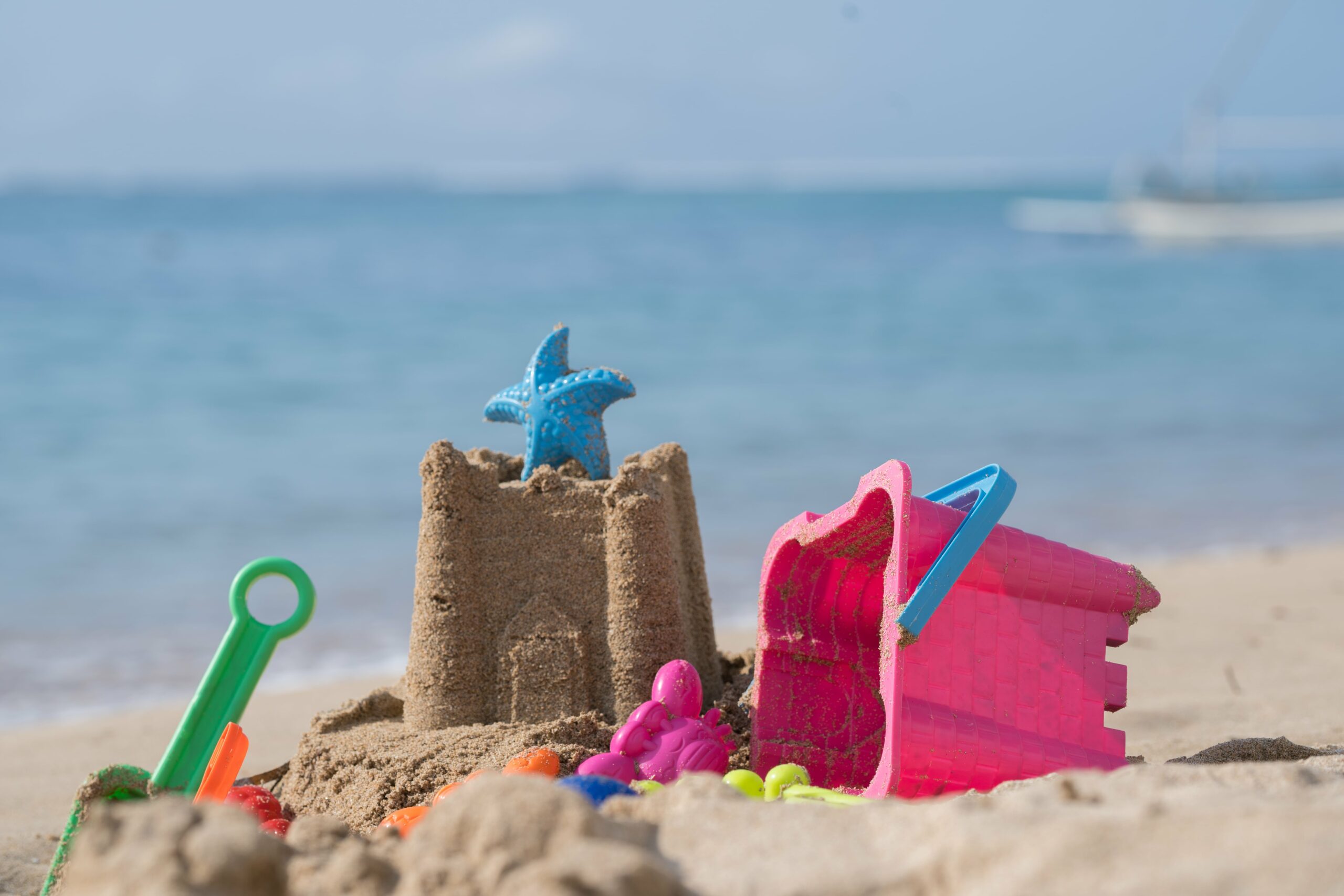Embarking on a sensory journey at Merusaka Nusa Dua reveals how the true essence of Bali is beautifully woven into every detail of your stay, engaging not just your sight, but your sense of sound, scent, touch, and most deliciously, taste. We believe a truly memorable holiday is about more than just a beautiful room with a view; it’s about how the entire environment makes you feel – how it captivates you, calms your spirit, and creates moments that last a lifetime.
This philosophy is at the heart of what we call an “Immersive Brand Experience.” It’s our commitment to crafting a stay that connects you deeply with the spirit of Bali through all five of your senses. As your friendly hosts here at Merusaka Nusa Dua, we’d be delighted to take you on a virtual tour, exploring how the sights, sounds, scents, textures, and flavors of our resort come together to create a uniquely enchanting experience.
The Sense of SIGHT: A Vision of Balinese Harmony
Your sensory experience begins the moment you arrive.
- A Grand, Inspired Welcome: As you enter our lobby, you’ll feel a sense of openness and grace. The architecture thoughtfully blends traditional Balinese design principles, like high-gabled roofs that echo temple structures, with a modern, spacious aesthetic. The very name “Merusaka” is inspired by ancient Sanskrit, blending the concepts of the abode of the Gods (Meru) and the forest (Saka), creating a vision of a grand palace nestled within a serene forest – a theme you’ll see reflected all around you.
- Lush Gardens & Tranquil Waterways: Your eyes will be drawn to the meticulously landscaped tropical gardens that form the heart of the resort. Lush greenery, vibrant frangipani trees, and serene water features create pathways and courtyards that feel both expansive and intimate, inviting quiet contemplation.
- The Iconic Ocean Vista: From the resort’s central areas, your gaze is naturally pulled towards the stunning, multi-tiered swimming pools. Their shimmering blue waters create a visual pathway leading directly to the soft white sands of Nusa Dua beach and the calm, turquoise expanse of the Indian Ocean beyond. It’s a view that immediately calms the soul.
The Sense of SOUND: The Soundtrack of Tranquility
Close your eyes for a moment and just listen. The soundtrack of Merusaka is one of peace and authentic Bali.
- Gentle Balinese Melodies: Often, the air in our lobby is filled with the subtle, hypnotic sounds of traditional Balinese music. The gentle, woody resonance of a Rindik (bamboo xylophone) or the shimmering, interwoven patterns of a Gamelan orchestra create a calming ambiance that instantly transports you.
- The Music of Nature: This man-made beauty is complemented by nature’s own soundtrack. You’ll hear the soothing, rhythmic whisper of waves washing onto the shore, the soft rustle of palm leaves in the sea breeze, and the cheerful chirping of tropical birds greeting a new day.
- The Sound of Peace: Perhaps most importantly, especially compared to Bali’s more bustling areas, you’ll notice the prevailing sound is one of tranquility. It’s a peaceful atmosphere that allows you to truly disconnect, hear your own thoughts, and relax.
The Sense of SCENT: The Aromas of Paradise
Bali is an island rich with beautiful fragrances, which we embrace throughout the resort.
- Natural Tropical Blooms: As you wander through our gardens, you’ll be greeted by the sweet, iconic perfume of frangipani (jepun) flowers, a scent synonymous with Bali itself, along with other fragrant tropical blooms.
- A Whisper of Sacred Incense: In the mornings, you may catch the subtle, earthy, and sweet scent of Balinese offerings (Canang Sari). Our team places these with care around the resort each day as a sign of gratitude and respect for the island’s traditions, a beautiful daily ritual.
- The Serenity of the Spa: Step near Merusaka The Spa, and you might be greeted by the calming aromas of lemongrass, sandalwood, ylang-ylang, or other natural essential oils used in our treatments, all designed to soothe the mind and body.
- Fresh Ocean Air: And always, there is the clean, unmistakable salty scent of the sea breeze carried in from the Indian Ocean, a constant reminder of your beautiful coastal setting.
The Sense of TOUCH: Textures of Comfort & Relaxation
Your sensory journey continues with the feeling of true comfort and relaxation.
- Refreshing Waters: Imagine the wonderful sensation of slipping into the cool, clear water of our expansive swimming pools on a warm Bali day, the sun gentle on your skin.
- Soft Sands Beneath Your Feet: Experience the simple pleasure of a morning walk along Nusa Dua beach, feeling the fine, soft white sand between your toes.
- Refined Comfort in Your Sanctuary: In your room or suite, notice the tactile sensations of comfort – the crisp, high-quality linens on your bed, the smooth feel of wooden furnishings, and the plushness of a comfortable lounge chair.
- The Healer’s Touch: Perhaps the most profound experience of touch comes from a traditional Balinese massage at our spa, where the skilled hands of our therapists work to release tension and restore balance.
The Sense of TASTE: An In-Depth Culinary Journey Through Merusaka
We believe that taste is the delicious culmination of a truly immersive sensory journey, where Bali’s rich heritage and fresh ingredients come to life on your plate.
- Homaya Restaurant: A Celebration of Indonesian Heritage
- The Concept: Step into Homaya for an authentic taste of the archipelago. We’ve designed it to feel like a warm, welcoming traditional Balinese home (homaya means ‘in the house’), where cherished recipes are shared with pride.
- The In-Depth Experience: Your culinary exploration here could be the magnificent Homaya Rijsttafel. This is a spectacular feast inspired by historical traditions, where a grand procession of many small, incredibly flavorful Indonesian dishes are served together, allowing you to sample the diverse tastes of the nation all at once. Or perhaps you’ll savor our signature Bebek Betutu, a whole duck, rich with a paste of 16 Balinese spices, slow-cooked for hours until the meat is unbelievably tender and falls from the bone. Another highlight is the authentic Ikan Bakar Jimbaran – fresh, locally sourced fish grilled to perfection with traditional spices, capturing the essence of a classic beachside barbecue.
- Gading Restaurant: International Flavors & All-Day Comfort
- The Concept: Gading is our vibrant, all-day dining venue, offering beautiful views and delicious choices for any time or craving.
- The In-Depth Experience: Start your perfect day here with our impressive buffet breakfast, exploring live cooking stations and lavish displays laden with fresh tropical fruits, artisan pastries, Asian specialties, and international favorites. For lunch or dinner, the à la carte menu presents comforting global classics prepared with expertise alongside inspired Asian dishes, ensuring a satisfying and delightful choice for every palate.
- Jajan By The Sea: Casual Beachfront Bliss
- The Concept: This is the perfect relaxed, open-air spot right by the beach, where you can feel the sea breeze and listen to the waves.
- The In-Depth Experience: Imagine enjoying a delicious, freshly made wood-fired pizza with a stunning view of the ocean for a casual lunch. Or perhaps sharing a platter of succulent grilled seafood as the afternoon sun begins to soften. The menu here focuses on satisfying, high-quality comfort foods that perfectly complement a sun-drenched day of relaxation.
- The Bar & Lobby Lounge: Crafted Sips to Complete the Day
- The Experience: Conclude your evening by savoring a signature cocktail. Our talented mixologists often use local ingredients like lemongrass, ginger, or tropical fruits to create unique concoctions. It’s the perfect way to toast to another beautiful day in paradise.
Conclusion: Your Immersive Bali Experience Awaits
A stay at Merusaka Nusa Dua is designed to be so much more than just a holiday; it’s a truly immersive experience crafted to engage all five of your senses. From the visual harmony of our architecture and gardens to the soothing sounds of Gamelan and the ocean, the fragrant scents of frangipani and incense, the textures of comfort, and the delicious journey through the flavors of Bali – every element is thoughtfully woven together to create lasting and meaningful memories.
This is what we believe an “Immersive Brand Experience” truly is. It’s not just about what you see, but what you feel, taste, hear, and remember long after you’ve returned home. We warmly invite you to come and embark on your own sensory journey with us.














